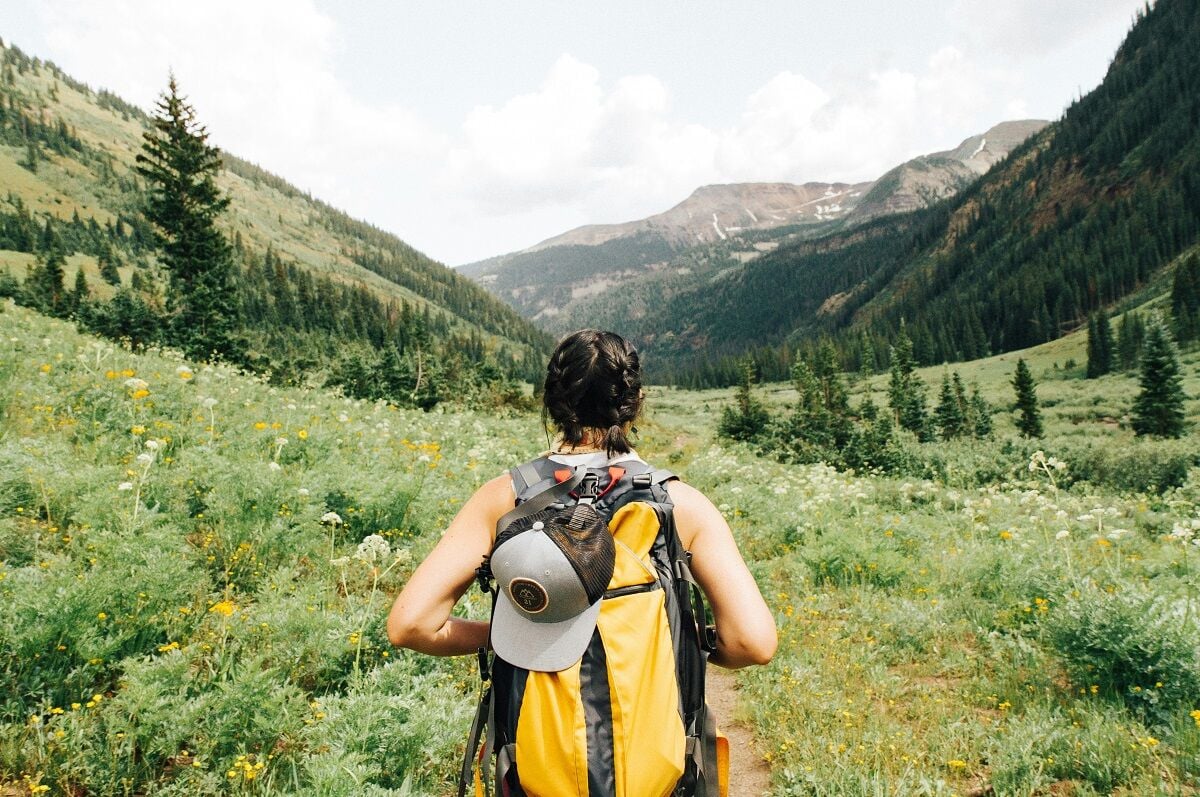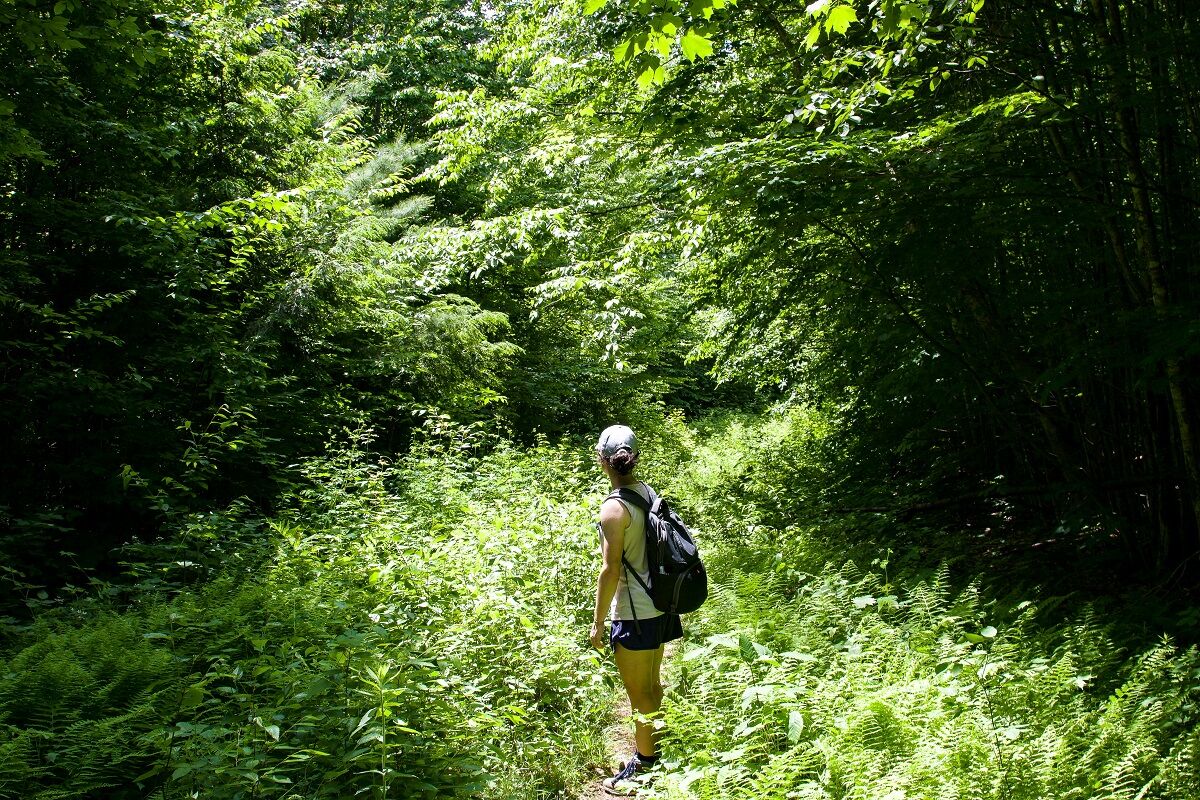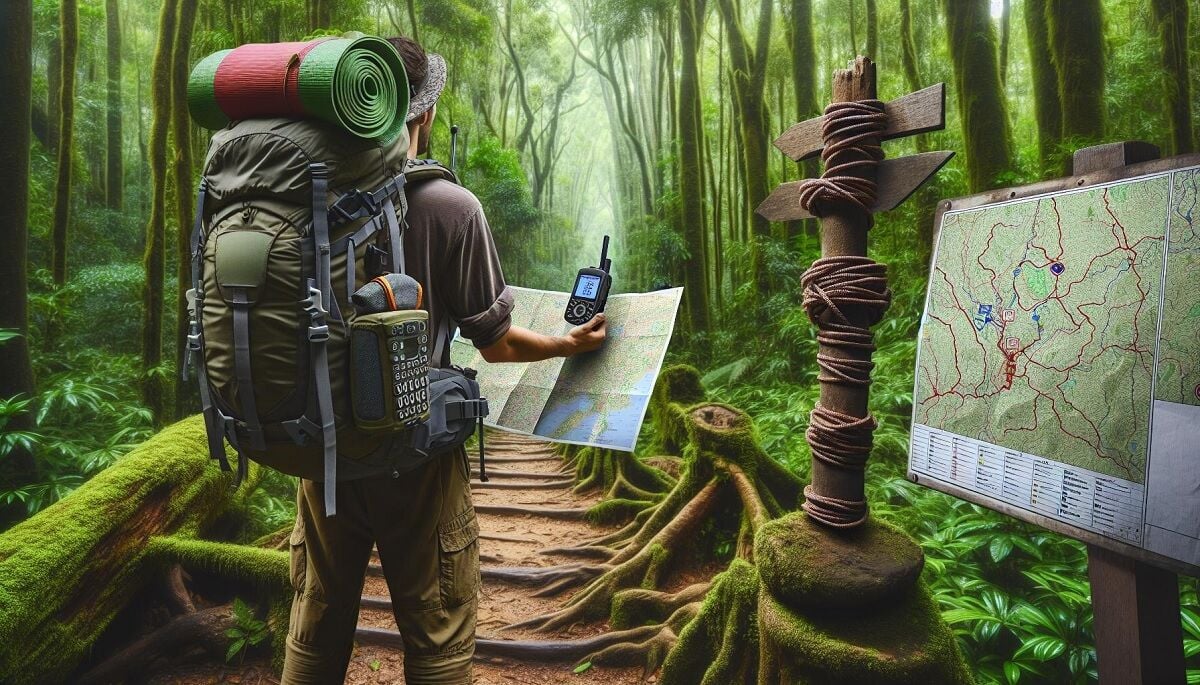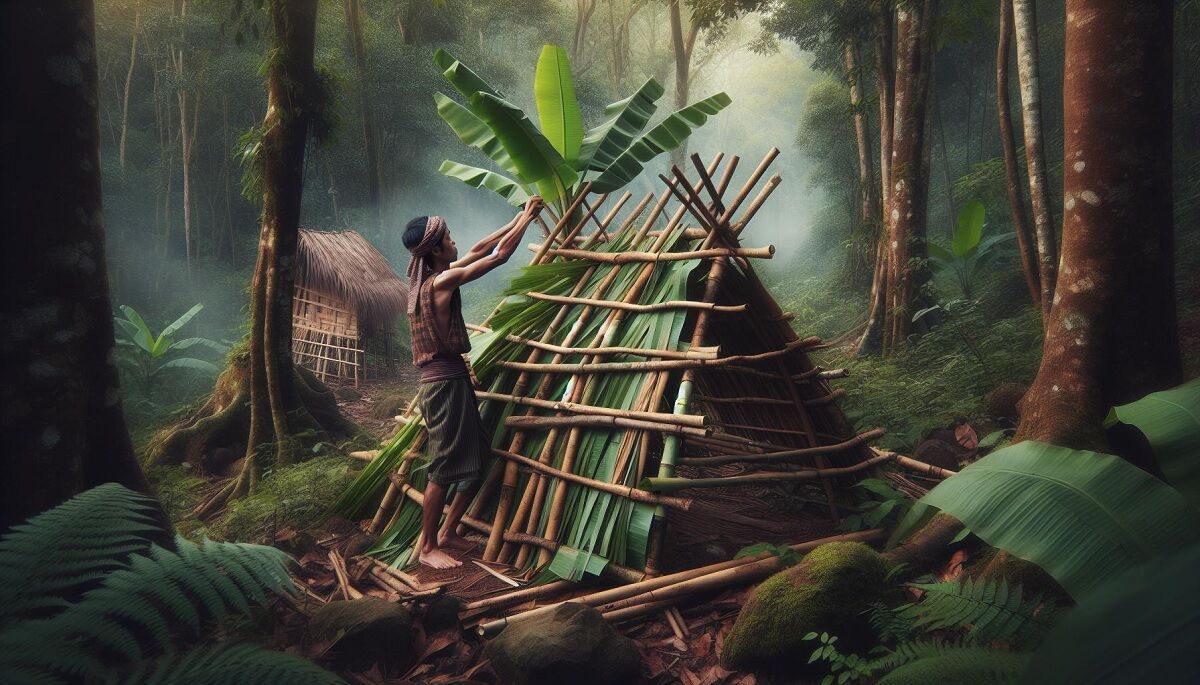Tips to staying alive if you lost in Thailand forest

Have you ever found yourself disoriented amidst a thick, sprawling forest with only your resourcefulness at your disposal? Consider a plausible incident in Thailand’s verdant forest reserves where, as the sun dips below the horizon, you suddenly discern your deviation from the established trail. This is a situation more common than you may presume, exemplified by the occurrence of 11 American exchange students who unknowingly wandered into the vicinity of the Huay Tueng Thao reservoir.
The allure of the wilderness is matched by its unforgiving nature – a perilous expanse teeming with hazardous elements, from precarious rocks and waterfalls to a confounding expanse of flora. Should you be encumbered by the additional weight of heavy gear, the difficulty of the situation can rapidly escalate from arduous to perilously life-threatening.
This document serves the purpose of equipping you with the appropriate knowledge and strategies required to manoeuvre through such scenarios proficiently. Therefore, even in instances when technology like Google Maps may forsake you, you would possess the necessary confidence and competence to confront the wilderness with a determined resolve.
Understanding Thailand’s forests
Gaining an understanding of Thailand’s forests, with their diverse ecosystems and formidable challenges, can boost your chances of survival if you’re misplaced. With knowledge comes power; a preliminary comprehension of forest types, wildlife, and potential threats can be a lifesaver.
Common forest types and their challenges
Thailand exhibits a wide range of captivating forest types. They span tropical rainforests, dry evergreen forests, deciduous forests, and mangrove forests that form a mortal but vibrant tapestry of the country’s ecology. Each type presents unique hurdles.
Tropical rainforests, like Khao Sok, exist as biodiversity havens rich in flora and fauna. However, their dense undergrowth and damp conditions make navigation and travel difficult. Dry evergreen forests offer less undergrowth but pose a risk of dehydration if you’re not cautious. Deciduous forests shed their leaves, making concealment difficult, and Mangrove forests are characterized by tidal zones and muddy terrains, making them challenging to traverse without suitable footwear.
Wildlife and plants to be aware of
Thailand’s forests present a variety of wildlife and plants. From benign creatures to potentially dangerous predators and venomous snakes, the wildlife in these forests demands respect. Prior knowledge of common wildlife and plants can provide an advantage.
Often, knowing what to steer clear of is as important as knowing what might aid your survival. Certain plants in these forests are edible and can provide sustenance. Others, like the giant hogweed, carry toxic sap that causes skin irritation. Identifying such plants correctly can avert potential dangers.
Preparing for forest exploration

Adventure in Thailand’s forests brings its own set of challenges and rewards. Proper preparation inescapably contributes to the success of any forest exploration venture. Armed with the requisite knowledge and tactical equipment, a forest trekker takes on the adventure, embracing the beauty of the wilderness while mastering survival odds.
Essential supplies to carry
In exploring Thailand’s forests, the importance of carrying essential survival supplies can’t be overstated. Make your adventure more manageable and safe by packing items that enhance your comfort and survival chances.
-
Distress signals: Pack lightweight smoke flares for signalling rescuers if you lose your way.
-
Navigation equipment: Carry a GPS device, a reliable compass, and paper maps. With these, you’re not solely dependent on online maps that can sometimes lead you astray in the dense forests.
-
Water: Hydration is crucial for survival. Pack enough water and a portable water purifier to treat available water resources.
-
Food: Include food supplies, such as continuous-snack trail mix and other non-perishable food items.
-
First-aid kit: Don’t forget a basic first-aid kit with bandages, antiseptic wipes, and other necessary medication.
-
Shelter elements: Pack a lightweight tent or a sleeping bag for rest.
-
Fire starters: Carry waterproof matches or fire starters. They’ll help you keep warm and cook your food.
-
Multi-purpose tools: Pack a Swiss Army knife or a similar multi-purpose tool. It will help in several circumstances, like building a shelter or cutting fruits.
Remember, being well-prepared is one significant step towards staying alive in Thailand’s forests.
Navigating and map reading skills
It’s crucial to remember the inherent truth about all forests: they can easily disorient even the most experienced explorer. Whether it’s Thailand’s thick rainforests or mangrove clusters, knowing your way back is as important as knowing your way in.
-
Understand topography: Learn about the topographic signs on your map. They provide noteworthy details about the terrain’s elevation, type, and distance.
-
Becoming familiar with cardinal directions: Basic orientation skills are lifesavers. Familiarize yourself with cardinal directions (North, South, East, and West), and how they relate to your surroundings.
-
Landmarking: Spotting familiar landmarks and structures can help in direction finding. Connect these landmarks with the information on your map.
-
Trailing: Leave markers along your path that can help you trace back. Stones, branches even carves on tree barks can serve as effective trail markers.
Immediate steps upon realising you are lost

If you discover yourself lost in Thailand’s forests, following specific steps can increase your chances of survival and rescue.
Stay calm and assess your surroundings
Losing your way in Thailand’s forests can prove daunting, but it’s crucial to maintain a calm mindset. Panic often clouds judgment, thereby hindering your ability to make sound decisions. So, take deep breaths, slow your heart rate, and try to clear your mind first.
Once calm, conduct a thorough assessment of your surroundings. Identify any landmarks, potential shelter sites, water sources, or hazards in the area. The aim is to familiarize yourself with the environment, enabling better strategic planning.
Establishing a base location
Once you’ve assessed your surroundings, it’s time to establish a base location. Preferably, this should be a location near a water source, sheltered from extreme weather conditions, and visible enough for potential rescuers to spot. Erect distress signals at this base location to increase visibility.
Remember, help may be on its way so it’s often beneficial to stay in one place. By darting around aimlessly, it might become more difficult for rescuers to locate you. To ease eventual rescue operations, try to leave noticeable markers along your path if it’s essential to leave this base location to gather resources.
Survival strategies in the forest

Exploring the wilderness, especially the dense Thailand forests requires undergoing several survival strategies to stay alive and navigate efficiently. These strategies involve creating a sustainable shelter, seeking water, and foraging for food safely.
Building a shelter
Constructing a dependable shelter signifies one of the initial steps of survival when lost in forests. A robust shelter protecting you from adverse weather conditions and wild animals ensures safety as well as comfort amidst challenge-ridden circumstances. Examples include a bamboo frame and banana leaf roof, ideal for the environment of Thailand forests. Bamboo possesses exceptional strength and versatility, while banana leaves provide substantial coverage, both readily available in these forests.
Methods to find water
Hydration plays a vital role in survival circumstances, and Thailand’s forests are home to numerous water sources. You could boil water from a river, stream, or puddle, and post a three-minute heating over the fire to ensure safety. Alternatively, if a fire building is a hurdle, collecting rainwater or consuming dew gathered on leaves serves as a feasible option. However, direct drinking from rivers is reserved for extreme situations owing to potential health risks.
Foraging for food safely
Forest environments overflow with natural provisions for food, if you possess the knowledge to identify these resources correctly. Finding worms, fruits, or specific plants such as herbs for medicinal and food purposes guides towards surviving in the Thailand forests. Constant awareness of your surroundings will help you identify these edible flora and fauna. However, it’s crucial to familiarise yourself with safe and hazardous forest produce, as some possess harmful, even fatal effects on consumption, to ensure your food foraging remains safe. Be wary of fruits that boast a too-bright colour or possess a bitter taste. These might be poisonous or harmful.
Rescuing yourself

Signalling for help
When you’re lost in Thailand’s dense forests, reaching out for help becomes priority number one. Keeping a whistle handy can greatly enhance your chances of attracting attention. A whistle carries much further than the human voice, especially over the sound of the pouring rain or the strong wind in the forest. Remember, three short bursts indicate distress universally.
Equally important is making yourself visible from the sky, as a lot of rescues in thick forests are initiated by helicopters. Arranging rocks, branches, or items of clothing in clearings or open areas in the shape of a giant ‘X’ can serve as an excellent distress signal. Remember, the priority is to get noticed. So, ensure any signal you produce is large, bright, and unusual enough to be distinguished from the forest environment.
Navigational tips to find your way out
Navigating safely out of Thailand’s dense forests requires skill and a sound understanding of the environment. Memorising the route as you venture into the forest, taking note of specific landmarks or unique vegetation, can be invaluable when trying to retrace your steps later.
It’s also crucial to get a grasp of basic celestial navigation skills. The sun, for instance, rises in the east and sets in the west. At night, you can look to the stars for guidance. The North Star, or Polaris, remains fixed and can show you the true north. These techniques might sound old school, but they are life savers when the GPS fails, the battery drains or the satellite signal is lost.
Learning to recognise watercourse patterns is beneficial too. Most watercourses lead to larger bodies of water and often, civilisation. Staying alongside a watercourse not only provides you with a constant supply of water but also gives you a sure-fire path that you can follow.
Eco-tourism in Thailand offers travellers a guide to sustainable travel hotspots, where they can explore the country’s natural beauty responsibly. From lush rainforests to pristine beaches, these eco-friendly destinations prioritize conservation and community involvement, providing an enriching experience while preserving the environment for future generations.

































